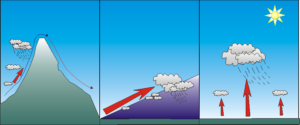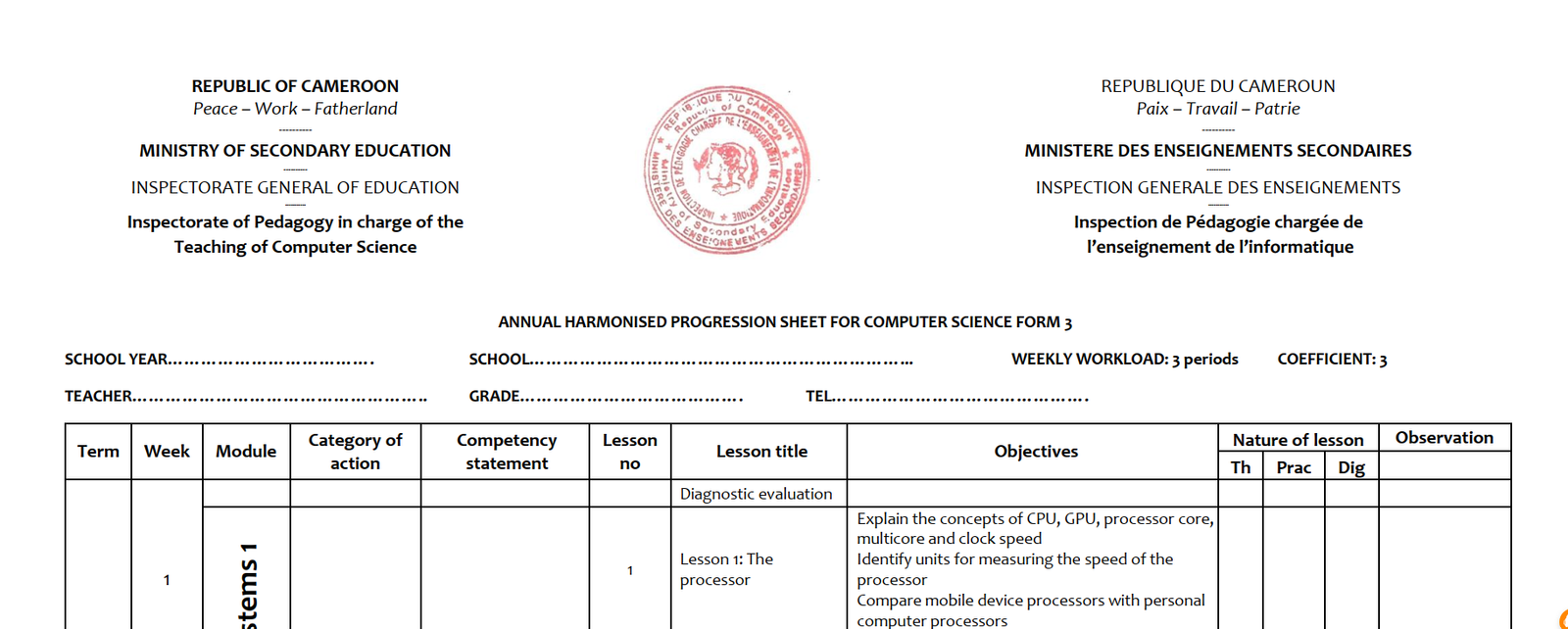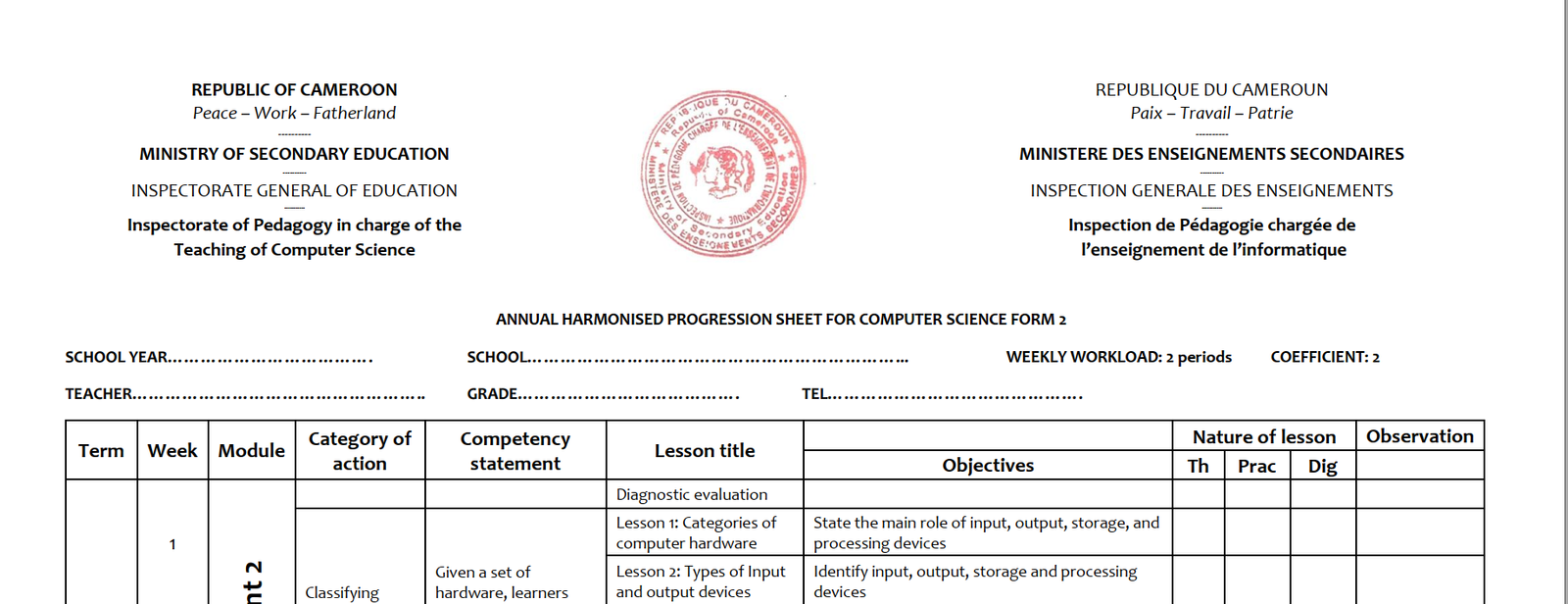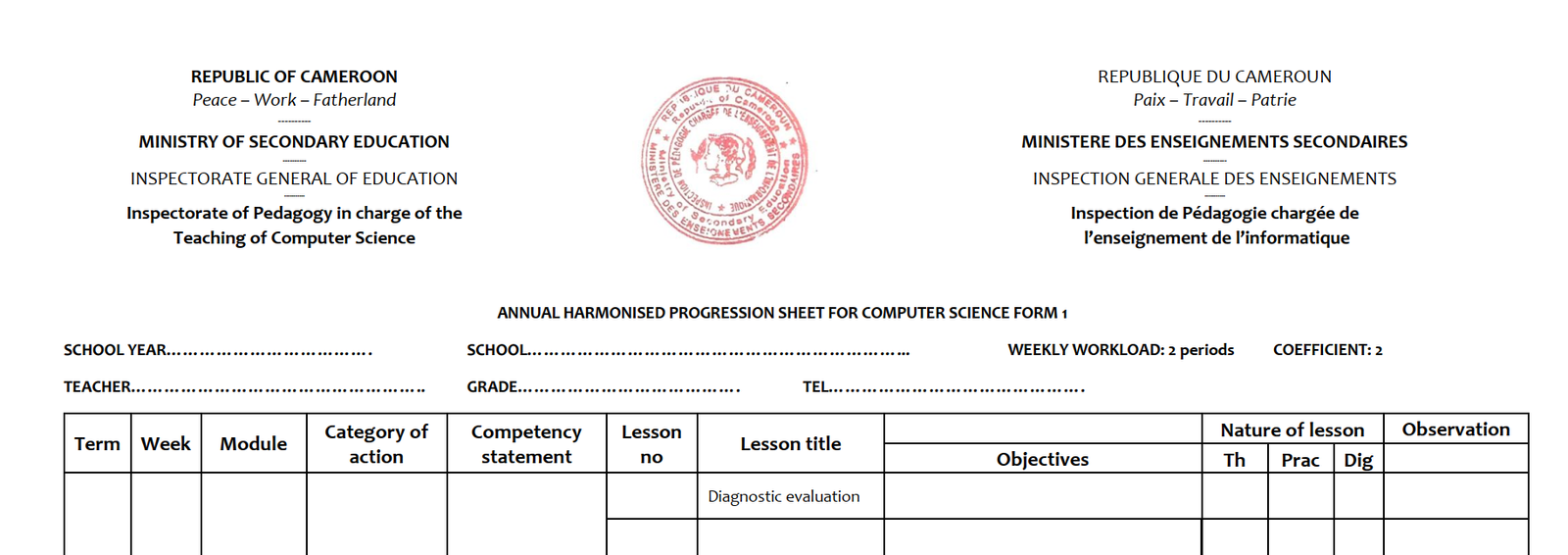condensation and rainfall
Lesson 26: CONDENSATION
Condensation is he processes by which water vapour upon cooling change it state into liquid or solid state.
Clouds and their classifications
Clouds are masses of condemn water vapour floating in the atmosphere typically high above the ground level.
- High level clouds (5-13 km of altitude) e.g. Cirrus clouds
- Medium level clouds(2-7km) e.g. CUMULUS CLOUDS
- Low level clouds(0-2km)
- Clouds with large vertical extends(0- 13km)
Precipitation
It is any form of H2O (liquid or solid) formed from the condensation of atmospheric water vapour.
- Rainfall: this is the liquid precipitation consisting of water droplets that have condensed from the atmospheric water vapour and then became heavy to remain in the atmosphere; as a result, they fall toward the surface as rain.
- Drizzle: it is light liquid precipitation consisting of liquid precipitation consisting of liquid water smaller than those of rainfall
- Dew: these are tiny droplets of water found on vegetation and other objects often in the morning.
- Hail: these are large ice crystals that fall in rain during thunder storms.
Types of rainfall
- Convectional rainfall
- Orographic rainfall
- Frontal rainfall
- Convectional rainfall: this is the type ofrianfall that comes from much heating of the earth surface.
When the sun reaches an area of the earth surface, the near the surface light and rises. When it reaches the condensation level, it expands and cools leading to the formation of clouds. The rain that falls from it is called convectional rainfall
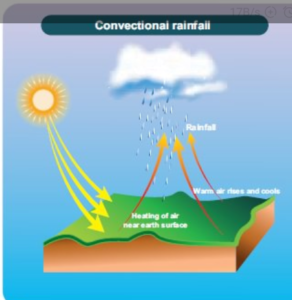
- Orographic rainfall: this is the type of rainfall that occurs when warm moist air is forced to ascend a mountain or barrier.
When warm moist air blowing reaches a barrier, it is forced to ascend the mountain or barrier. When it reaches the condensation level clouds are formed which produce rainfall on the wind ward side of the mountain Leaving the leeward side of the mountain dry.
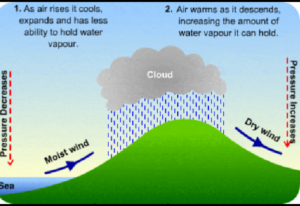
- Frontal rainfall: this is the type of rainfall that occurs from the meeting of two air masses of different temperatures.
WHEN THE two air masses meet, e.g. Warm light and cold dense air mass, they do not meet due to the difference and hence the formation of a front.
The warm light air mass is forced to ascend, when it reaches the condensation level, clouds are formed which results in rainfall.
